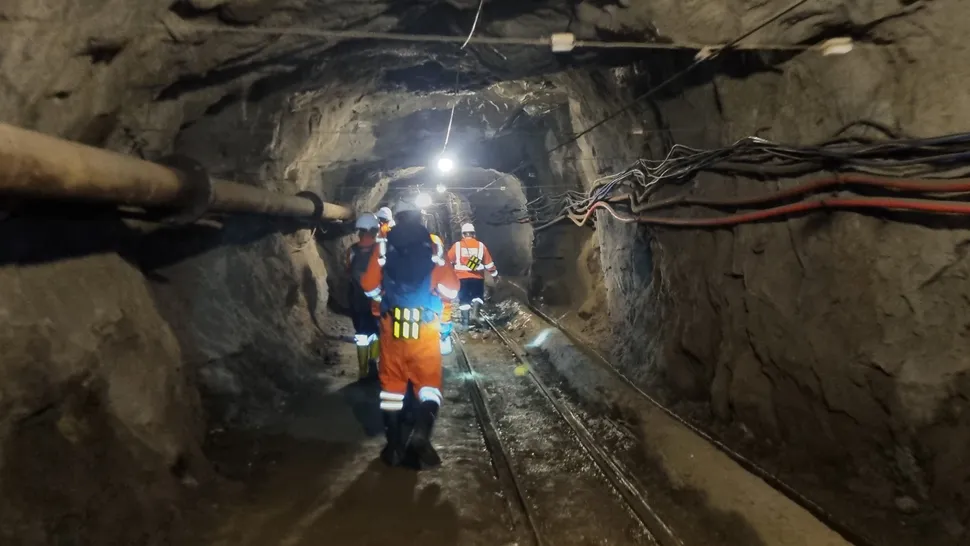Seriously weight and sweltering temperature would go with a trip down through Earth’s layers and out through the other side. Be that as it may, this trip would be conceivable as it were in science fiction.
Earth’s numerous layers are covered up from see. But what in case we may penetrate through the center of the planet to the other side? What extraordinary strengths and temperatures would we experience profound inside the planet?
Indeed in spite of the fact that boring through Soil remains science fiction, researchers have a few thoughts around what might happen based on involvement from other penetrating projects.
Earth’s breadth is 7,926 miles (12,756 kilometers), so boring all the way through the planet would require a huge bore and decades of work.
The to begin with layer to penetrate through is the outside, which is around 60 miles (100 km) thick, agreeing to the U.S. Topographical Study. The air weight would increment as the bore traveled more distant underground. Each 10 feet (3 meters) of shake is break even with to approximately 1 air weight, the weight at ocean level, Doug Wilson, a inquire about geophysicist at the College of California, Santa Barbara, told Live Science. “That includes up truly fast when you’re talking around a expansive number of kilometers,” he said.
The most profound human-made gap nowadays is the Kola Superdeep Borehole in Russia, which is 7.6 miles (12.2 km) profound. At its foot, the weight is 4,000 times that at ocean level. It took researchers about 20 a long time to reach this profundity, agreeing to World Chart book. And that’s still over 50 miles (80 km) absent from the following layer, the mantle, agreeing to Soil layer information from the USGS. The mantle could be a (2,800 km) layer of dull, thick shake that drives plate tectonics.
The boundary between the mantle and the center is called the “Moho” (brief for “Mohorovičić irregularity”). Researchers first attempted to burrow here through the profound seafloor within the 1950s and 1960s with Venture Mohole, but they were unsuccessful.
The gap made within the journey to bore through the planet would cave in unless we ceaselessly pumped penetrating liquid into the gap. In deep-sea and oil-well boring, that liquid may be a of mud that incorporates overwhelming minerals, like barium. The weight of the liquid equalizations the weight interior the gap with the weight of the encompassing shake and anticipates the gap from collapsing, Wilson explained.
The penetrating liquid serves two extra parts: It cleans the penetrate bit to anticipate sand and rock from gunking up the machinery, and it makes a difference lower the temperature, in spite of the fact that it would gotten to be about outlandish to keep the bore cool in Earth’s deepest layers.
For occasion, the temperature within the mantle may be a 2,570 degrees Fahrenheit (1,410 degrees Celsius). Stainless steel would liquefy, so this penetrate would ought to be made of an costly specialized combination, like titanium, Wilson said.
Once through the mantle, the bore would at long last reach Earth’s center at almost 1,800 miles (2,896 km) down. The external center is made generally of fluid press and nickel and is amazingly hot, with temperatures extending from 7,200 to 9,000 F (4,000 to 5,000 C), agreeing to the California Institute of Sciences. Penetrating through this hot, molten iron-nickel combination would be particularly difficult.
“That would cause a entire run of issues,” Damon Teagle, a teacher of geochemistry at the College of Southampton within the U.K., told Live Science. The red hot outer core would be like boring through a fluid, and it would likely liquefy the drill unless cold water was pumped down.
At that point, after 3,000 miles (5,000 km), the penetrate would reach the internal center, where the weight is so intense that, in spite of the searing temperatures, the nickel and press center remains strong. “You’d truly be at indefinable weights,” Teagle said — around 350 gigapascals, or 350 million times air pressure.
This entirety time the bore would be pulled down to the center by Earth’s gravity. Within the center of the center the gravity would be comparable to being in circle — viably weightless. That’s since the drag of Earth’s mass would be rise to in all headings, Wilson said.
Then as the bore proceeds toward the other side of the planet, the drag of gravity will switch relative to the position of the bore, effectively pulling it “down” toward the center once more. The penetrate will have to be against gravity because it pushes “up” toward the surface, back through the external center, mantle and hull to turn around the descending journey.
In the event that all these impediments are overcome, the greatest issue once you reach the midpoint is that you’d still have “a long way to go” to reach the other side, Teagle said.

